650
Antarctic Couch Potato
More recently, there was talk about the seal hunt. Now I would like to talk about themselves popodbrobney animals.
Seals - important predators in Antarctica. Six most common types of seals, many of whom live far from the coast, on the drifting ice.
18 ph via animalpicture
1. Young elephant seal. A huge, enlarged nose is absent in females and young males.

2. After continuous growth of the trunk reaches full size of the eighth year of his life and hangs over the mouth nostrils down.

3. crabeater seals. The most numerous seal in the world (50 million individuals), biomass crabeater four times the biomass of all the other seals together. Despite its name, it is not powered crabs and krill.
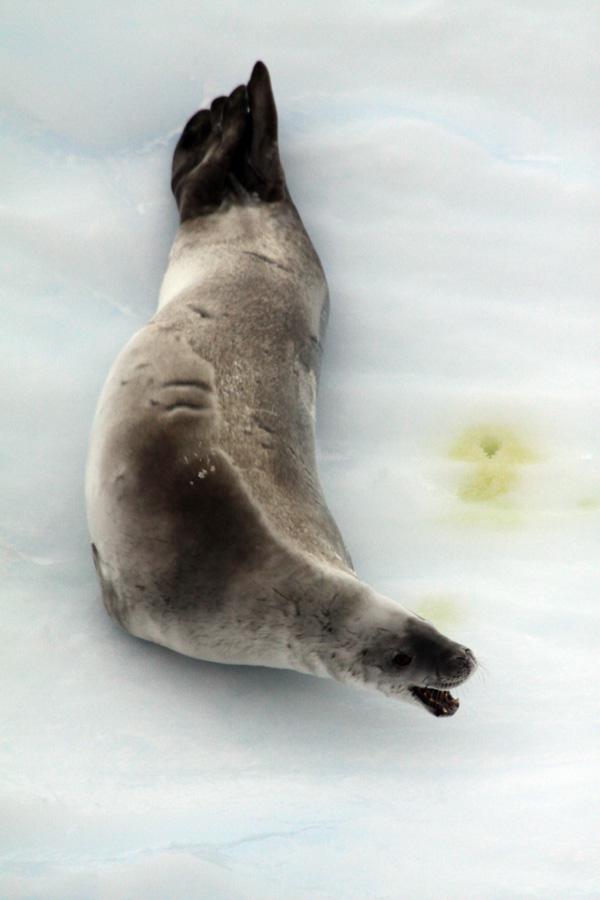
4. Sleeping elephant seal.
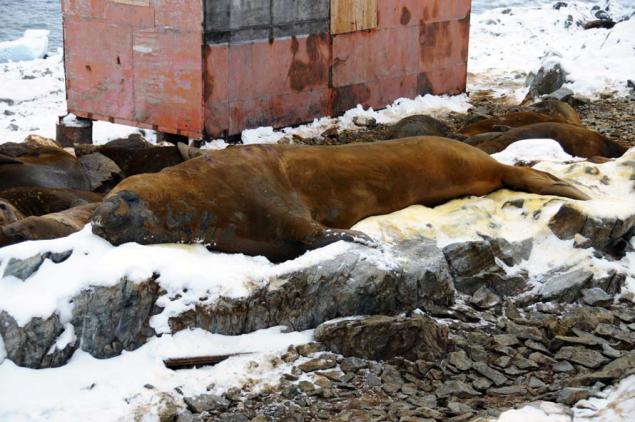
5. The male elephant can reach sizes of up to six and a half meters, and the female is only three and a half meters. The weight of the male is up to three and a half tons, the female weighs a maximum of 900 kg.
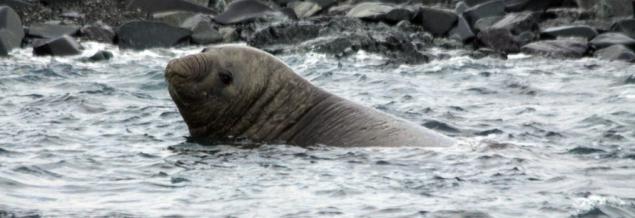
6. South American fur seals prefer rocky shores and are able to overcome a fairly steep climb to get to their holiday destinations. Often they rest in caves, trying to escape the heat of the day.
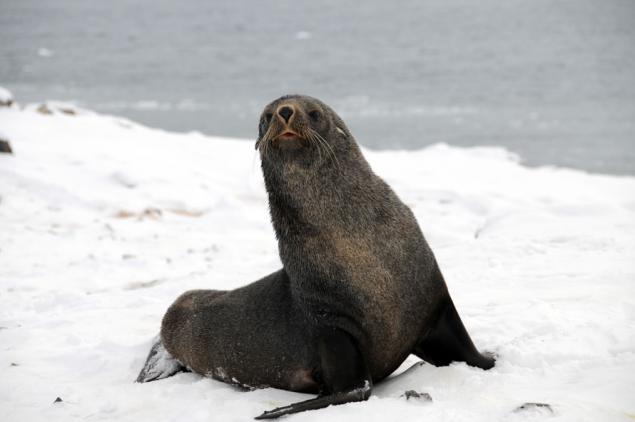
7. New Zealand fur seal lives today mainly on the coast of the south island of New Zealand, as well as the southern and western coast of Australia.
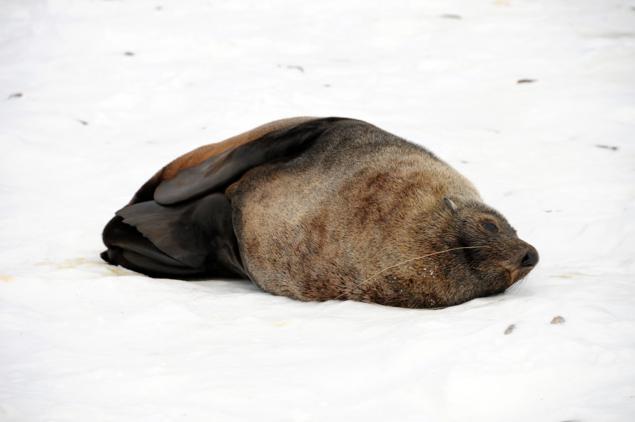
8. The Group of sea lions in the evening.
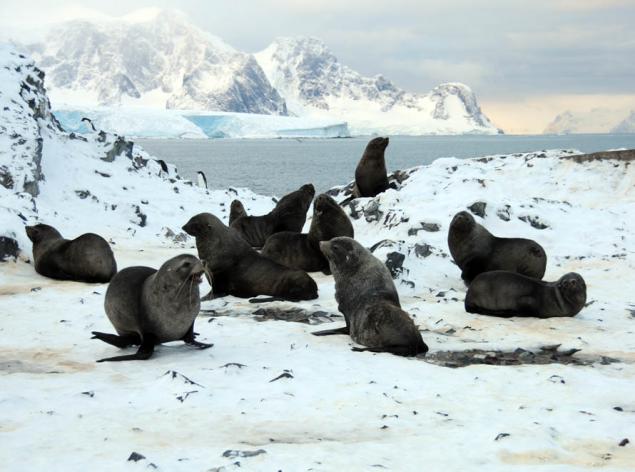
9. Seals appear on the rookeries only during the breeding season - from May to the end of November. Some animals, mainly of semi, can remain on the rookeries and winter.
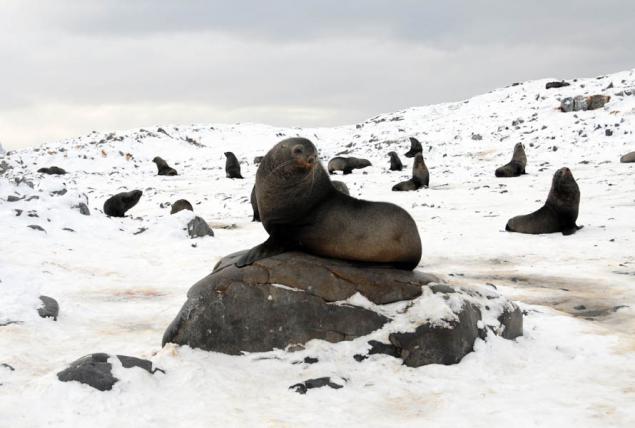
10. In search of prey swim dozens or even hundreds of kilometers. On the meager rations it difficult to hold on: the stomach of an adult male holds 15-16 kilograms of food.
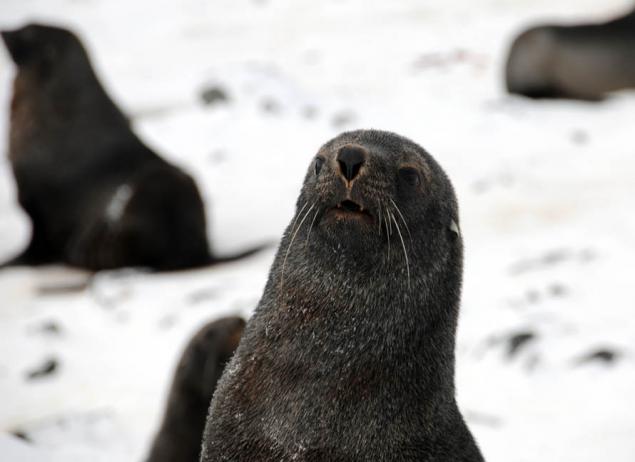
11. During mating elephant seals, usually lead a solitary lifestyle, gather in large colonies. The ratio of males and females at the same time is approximately one to ten, sometimes one to twenty.
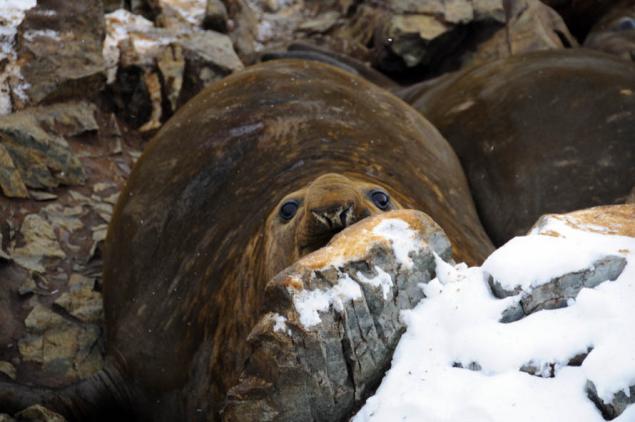
12. Seal the Far East - Larga, has an average size. Body length varies geographically from 140 to 190 cm to 210 cm rarely. Weight changes according to the season of the year in the range of 50-150 kg. Males are larger than females few. In the area of the Pacific Ocean lives especially big race.

13. Easy access to the water for "seals the channel."

14. Extraction of elephant seals are fish and cephalopods. Elephant able to dive for prey to a depth of 1400 m.
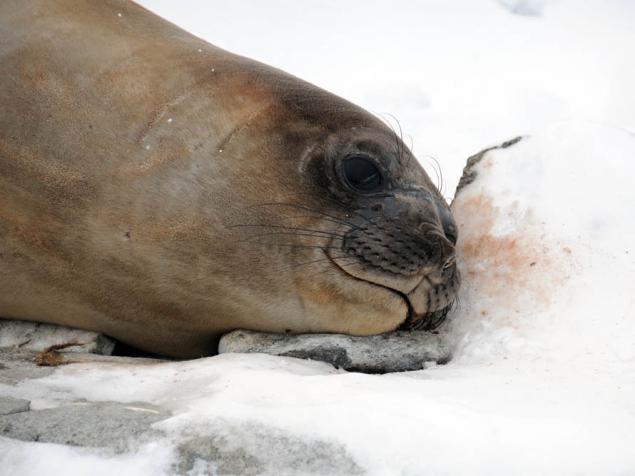
15. Puberty elephant seals reach the age of three to four years. However, strong enough to defend its own harem, the males are only eight years old.
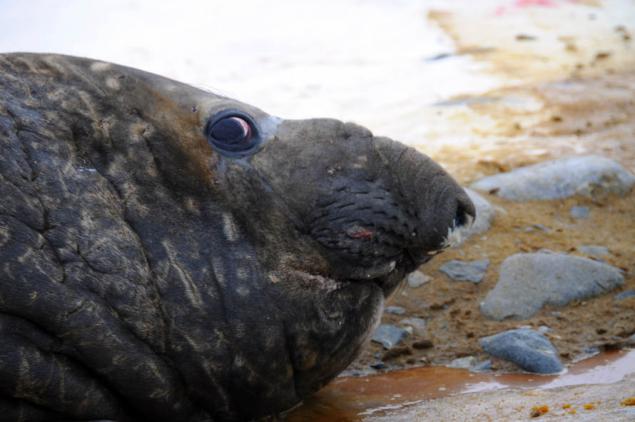
16. The natural enemies of elephant seals are white sharks and killer whales, hunting in the upper layers of water.

17. Life is full of dangers harem bulls. Observations of the labeled animals have shown that the majority of males takes its place at the head of the harem no more than 2 weeks. If you care to feed his place is taken by the opponent, and can not always be the original owner of the harem to become the head of the clan again.

18. If a male wants to mate with a female, he puts it on one of its front fins and biting her neck.

Source:
Seals - important predators in Antarctica. Six most common types of seals, many of whom live far from the coast, on the drifting ice.
18 ph via animalpicture
1. Young elephant seal. A huge, enlarged nose is absent in females and young males.

2. After continuous growth of the trunk reaches full size of the eighth year of his life and hangs over the mouth nostrils down.

3. crabeater seals. The most numerous seal in the world (50 million individuals), biomass crabeater four times the biomass of all the other seals together. Despite its name, it is not powered crabs and krill.

4. Sleeping elephant seal.

5. The male elephant can reach sizes of up to six and a half meters, and the female is only three and a half meters. The weight of the male is up to three and a half tons, the female weighs a maximum of 900 kg.

6. South American fur seals prefer rocky shores and are able to overcome a fairly steep climb to get to their holiday destinations. Often they rest in caves, trying to escape the heat of the day.

7. New Zealand fur seal lives today mainly on the coast of the south island of New Zealand, as well as the southern and western coast of Australia.

8. The Group of sea lions in the evening.

9. Seals appear on the rookeries only during the breeding season - from May to the end of November. Some animals, mainly of semi, can remain on the rookeries and winter.

10. In search of prey swim dozens or even hundreds of kilometers. On the meager rations it difficult to hold on: the stomach of an adult male holds 15-16 kilograms of food.

11. During mating elephant seals, usually lead a solitary lifestyle, gather in large colonies. The ratio of males and females at the same time is approximately one to ten, sometimes one to twenty.

12. Seal the Far East - Larga, has an average size. Body length varies geographically from 140 to 190 cm to 210 cm rarely. Weight changes according to the season of the year in the range of 50-150 kg. Males are larger than females few. In the area of the Pacific Ocean lives especially big race.

13. Easy access to the water for "seals the channel."

14. Extraction of elephant seals are fish and cephalopods. Elephant able to dive for prey to a depth of 1400 m.

15. Puberty elephant seals reach the age of three to four years. However, strong enough to defend its own harem, the males are only eight years old.

16. The natural enemies of elephant seals are white sharks and killer whales, hunting in the upper layers of water.

17. Life is full of dangers harem bulls. Observations of the labeled animals have shown that the majority of males takes its place at the head of the harem no more than 2 weeks. If you care to feed his place is taken by the opponent, and can not always be the original owner of the harem to become the head of the clan again.

18. If a male wants to mate with a female, he puts it on one of its front fins and biting her neck.

Source:






















